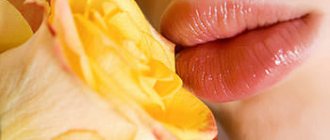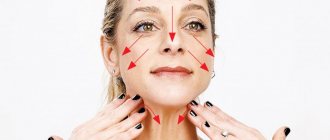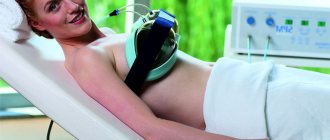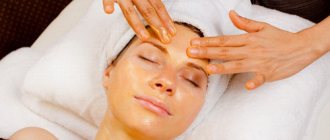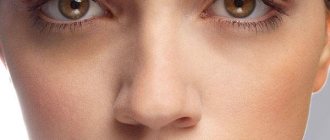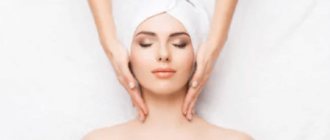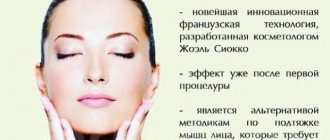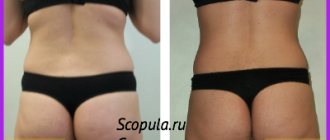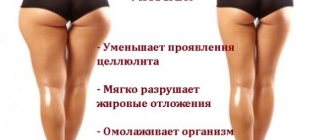Various types of massages are widely used to improve the external condition of the breasts.
This procedure can be carried out both in the salon and at home. Both girls and mature beauties are dissatisfied with the size of their bust and dream of enlarging it.
Is such an effect on the problem area beneficial for everyone? What do you need to know about massage techniques for breast enlargement and what types of procedures can be used, and what should be avoided? How to make them correctly at home? Let's figure it out.
What is mastopathy
Mastopathy is defined as fibrocystic nodes formed in the mammary glands. The reason is hormonal imbalance. Women over 40 years of age who have a history of unresolved gynecological issues are more often susceptible to mastopathy.
Symptoms of the emerging disease:
- severe tenderness of the mammary glands before menstruation;
- sensations of severe swelling of the mammary glands;
- discharge of a liquid substance from the nipples;
- enlarged lymph nodes in the armpit area;
- palpable nodes in the bust area.
A massage procedure can be a good measure for the prevention of mastopathy, but experts are divided on the usefulness of massage if the diagnosis has been made.
Only by choosing the right technique is it possible to reduce pain in the chest area and prevent the growth of formations. Massage movements will allow you to achieve harmonization of the balance of hormones, eliminate the change in the nature of the neoplasm into malignancy, and restore the elasticity and shape of the bust.
The massage procedure has been and will be one of the components of treatment, but it should be used under the supervision of mammologists and in conjunction with other drugs and procedures.
Benefits and possible harms of the procedure
Light rubbing is definitely beneficial for the breasts at any age. That's why:
- Massage has a beneficial effect on the skin - it tightens, strengthens and becomes more elastic.
- Mechanical irritation of the skin in this area leads to beneficial changes in the bust area.
- Vessels dilate, blood supply improves, and oxygen supply to tissues increases.
In what cases can physical impact cause harm?
When starting the session, you need to do an ultrasound of the mammary glands to make sure that the breasts are healthy. Mastopathy, cysts and benign tumors are strict contraindications to massage procedures as they promote the growth of tumors.
Carefully! An ineptly performed procedure stretches the skin and causes it to sag. You should also refuse further massage if your chest hurts after it.
When massage for mastopathy is contraindicated
No one forbids doing self-massage, but it is better to contact a specialist - a mammologist.
When the fibrocystic formations are still small, it is allowed to massage the breasts with light stroking following the direction of the lymph flow. Sudden and pressing movements are strictly contraindicated. Before performing a massage, be sure to familiarize yourself with the techniques of self-massage.
If there is an elevated body temperature, there are wounds, ulcers, or an allergic rash on the skin of the mammary glands, then massage manipulation is not allowed. If a malignant tumor is suspected, massage is contraindicated.
Basic rules for any influence on the bust
Massage effects should be light and superficial. Rough impact is unacceptable - it stretches the skin and can provoke a number of diseases.
- Movements should be directed from the nipple to the armpit area, as well as from the nipple to the clavicular area.
- Massaging is good to do in the evening after a shower. Afterwards, you need to relax while lying down.
- Before you decide to undergo a course of massage or self-massage, consult a gynecologist. If you have any breast disease, massage should not be done.
- Massaging to enlarge the bust should be performed in courses of ten to fourteen days, then be sure to take breaks.
Massage procedure for various types of mastopathy formations
Breast massage is allowed for fibrocystic type of mastopathy. It is the relaxing movements that help release fluid from the bloodstream. If the nature of the seals is fibrous, then the procedure is not prescribed with minor exceptions.
Stress is often a factor in the development of mastopathy, and massage allows you to overcome stress and relax. Thanks to massaging, the body’s nervous system is restored, which entails normalization of hormonal levels, normalization of lymph and blood flow, and tightening of the breast skin.
The sooner the procedure is started if mastopathy is diagnosed, the higher the likelihood of recovery.
What are the benefits of breast massage?
Lactostasis will not go away on its own, so it is important not to start the pathology and start the necessary treatment on time. One of the mandatory elements of therapy for lactostasis in nursing mothers is breast massage.
This procedure brings the following positive effect:
- Foci of stagnation and hardening in the chest are eliminated.
- Tissue swelling is reduced.
- The tissues soften, the feeling of “stone” breasts disappears.
- Stagnant milk is removed.
- Incipient inflammatory processes are eliminated.
- The circulation of milk in the ducts improves.
- The process and feeding regime are stabilized.
- Unpleasant and painful sensations are reduced.
Continued after advertisement
Find your massage therapist on MasterMassage.Ru!
Go to website
Massaging methods
When diagnosing mastopathy, strong movements, which can cause new lumps, are absolutely contraindicated.
You should not use drugs that contain alcohol, as they accelerate blood flow and, accordingly, can lead to an increase in nodes. The areas of lymph nodes and nipples should not fall into the area of massage movements.
There are several developed techniques for breast massage:
- The first technique is carried out in the shower. The mammary glands are first relaxed with streams of water from the shower head, and then the mammary glands are kneaded with the fingers in a circular motion and the seals are slightly squeezed.
- The second technique involves quickly rubbing the skin on the chest and kneading the mammary glands. Rhythmic movements help to dilate blood vessels, and small fibrous formations are reduced and may even resolve. The procedure is completed by shaking the mammary glands using the palm or fingers. This movement creates vibration, which frees up the lymph flow.
- The third massage technique is relaxing, characterized by superficially light movements and stroking towards the lymph nodes, according to the flow of lymph.
The rhythm of massage movements should be slow and light at the beginning, increase towards the middle, and decrease again at the end.
The cervical-collar area and back also need to relax the muscles by kneading them. But back massage can lead to the growth of mastopathy nodes, as blood flow increases. Therefore, the mammologist prescribes this procedure in a sitting position, taking into account the risk of developing mastopathy.
Massage technique
The average duration of the procedure should be 20–30 minutes. It is necessary to perform a massage 1 or 2 times a day , preferably after morning and evening feeding. This will allow you to identify any existing seals.
Most often, massage is performed at home by the woman herself, less often by a doctor. Movements should be smooth and soft in the direction from the periphery of the breast to the areola.
The standard massage scheme is as follows:
- Lightly warming the chest (usually with a heated diaper or warm shower).
- Smooth rubbing towards the nipple.
- Massage each breast clockwise to draw down the milk and express it.
- Kneading, tapping and shaking the seals.
- Massaging the entire breast to drive milk towards the areola.
- Finally, you can apply cold to the chest (for example, ice wrapped in a bag and a towel).
Massage of the breast during lactostasis can be performed using creams. However, it is important that they do not contain warming components or essential oils. It is best to choose unscented baby cream or massage oil. You can use olive oil.
Photo: Yandex.Pictures
The procedure can cause severe pain, but in this case you should not refuse sessions. You just need to reduce the intensity of your movements and massage as slowly as possible. Unfortunately, if you stop the sessions, the risk of mastitis will only increase.
A positive effect occurs after 3–5 procedures, but usually up to 10–12 sessions are required. It is important to massage regularly, and also pay attention to your well-being.
If the pain in the breast only increases, and there is an admixture of blood or yellow pus in the milk, then consult a doctor immediately.
Basic Rules
The procedure should be approached with care and precision. Remember that proper massage is the key to your health and the absence of complications.
Always wash your hands thoroughly before a session to avoid possible tissue infection. Also be sure to adhere to the following recommendations:
- It is necessary to control the degree of pressure during massage to avoid too sharp pain.
- During the session, you need to make sure that the cream or oil does not get on the nipple.
- After the procedure, it is best to take a warm shower - this will help improve blood circulation in the mammary glands.
The famous doctor Komarovsky, in addition to massage, recommends adhering to a certain diet for lactostasis in nursing mothers. Firstly, you should give up any diets. Eating restrictions can lead to serious changes in hormonal levels, which can also affect the development of pathology. Secondly, you should avoid experimenting with nutrition. It is best to consume those foods that were regularly present in the diet before pregnancy and lactation.
Preventive massage
In order to avoid stagnation of milk in the mammary glands, preventive procedures can be carried out. The advantage of this massage is that it increases tissue tone, prevents chest pain and improves the conductivity of the ducts.
It is best to do the manipulation before feeding the baby. What you will need for this:
- Perform slow circular movements with your fingers - from the upper part of the breast towards the areola.
- Carry out the procedure in the shower to wash your breasts with warm water from time to time. After this, the movements are repeated again.
The duration of such manipulation should be about 10–15 minutes. Through the procedure, you can relax your breast muscles and improve milk flow. This will also avoid milk residue after feeding.
Massotherapy
The procedure should be performed when the first lumps are detected in the breast. This will speed up their resorption and make feeding easier. The therapeutic breast massage scheme for lactostasis includes circular massaging movements of each breast. The manipulation is carried out immediately after feeding for 10–30 minutes.
If there is severe pain, you can massage only with your fingertips. Be sure to start from the top of the chest, gradually moving down to the nipple, but under no circumstances move in the opposite direction.
To ease the flow of stagnant milk, you can slowly lean forward so that your breasts hang down. Under the influence of gravity, the milk should move closer to the nipple.
After the session, it is recommended to take a warm shower. It will help improve blood flow in the tissues and also eliminate any remaining soreness.
You can perform the manipulation several times a day, which will allow you to achieve fairly quick results. It is important to remember that the treatment technique does not exclude other treatment and prevention of pathology. It is best to consult a mammologist or gynecologist to find out about additional measures.
Lymphatic drainage massage
The lymphatic drainage procedure is one of the treatment options, which has its own characteristics and differences from the classical technique. The technique copes well with incipient lactostasis and breast engorgement, helps eliminate tissue swelling and promotes the free flow of milk.
Lymphatic drainage massage of the mammary glands is performed with light sliding movements. Hands should move towards the lymph nodes in the middle of the chest and under the arms.
This procedure should be done before each feeding or expressing milk. The total duration of the session is from 5 to 20 minutes. You should continue the movements until you feel “light” in your chest.
To prepare the article, materials from the YouTube channel “Anastasia Ryabinina - Breastfeeding” were used.
What not to do
Lactostasis is not an obstacle to feeding a child; moreover, you should never stop feeding a sick breast . This will only provoke an inflammatory process. It's also best to avoid feeding and pumping at night.
Other prohibitions when signs of lactostasis appear:
- Do not apply compresses to the chest or warm the mammary glands with ointments or alcohol rubbing. Any prolonged heating activates the inflammatory process in tissues. A short warm shower after the massage will be enough.
- Avoid painful kneading and straining. If you experience severe pain during the massage, then perform the movements as gently and slowly as possible, avoid strong pressure.
- Do not resort to the “help” of relatives. An adult cannot suck out “stagnant” milk, since he has a different sucking mechanism. And due to the large number of microbes in the oral cavity, the nipple may become infected.
- Avoid medications that suppress lactation. Such medications are taken in extreme cases and only after consultation with the attending physician.
- Liquid intake should not be limited. During lactostasis, it is important to adhere to the drinking regime and drink enough water.
Lactostasis is a fairly common problem, but with the help of massage and following your doctor’s recommendations you can quickly get rid of it. The most important thing is not to neglect your own health and not to cause the disease.
How to massage the breast
The preparatory stage consists of superficial planar and then grasping stroking of the mammary glands with the palms of both hands. The procedure itself is divided into five techniques: stroking, rubbing, kneading, tapping and vibration. One without the others gives a positive result, but the greatest effect can be achieved only by combining them into a combined procedure. Massage movements are performed in wide strokes, covering the chest in the direction from bottom to top and outwards to the armpits. The session itself begins with soft and gentle stroking movements. After stroking, you can move on to rubbing, kneading and other massage techniques. If the pectoral muscle is flaccid, it is also useful to perform vibration. The breast massage procedure ends with stroking the breasts. During the session, you should avoid strong stretching of the skin, as this helps to weaken the elasticity of the mammary glands.
Women's breasts vary in degree of sensitivity. Those with delicate and sensitive breasts will benefit from a careful and gentle massage. For those with firm and elastic skin, moderate pressure.
Indications for breast massage
- Strengthening the muscles and ligaments of the pectoral muscle;
- Relaxation after exercise;
- Prevention of stretch marks on the skin;
- Correction of shape, increase in size;
- A way to avoid lactostasis in nursing mothers;
- Prevention of breast diseases;
- Maintaining breast health;
- Just a pleasant procedure;
Contraindications
- increased temperature (above 37°);
- acute inflammatory processes;
- neoplasms of any localization;
- pregnancy of any stage;
- postpartum period 3-6 months;
- severe heart disease, kidney disease, etc.;
- skin diseases in areas of massage;
- any formations in the gland;
- pain during and after the session.
Useful tips
Purely mechanical effects are unlikely to contribute to mammary gland enlargement. Massaging the skin is good to combine with a contrast shower and a set of exercises for the chest. Special exercises will help work the pectoral muscles, where the mammary glands are located. The massage will strengthen and tighten the skin. These three types of effects will be ideal - the breasts will become lifted and firm.
Girls who are underweight can enlarge their bust by gaining a certain number of kilograms. The bust consists of adipose, connective and glandular tissue, so those who suffer from underweight always have flat or very small breasts, since there is no fat layer in them.
When using diets to lose weight, be careful! Weight loss always leads to weight loss in the area. Round female forms suggest the presence of adipose tissue - a bust will not appear “out of thin air”.
In order to enlarge your breasts, you need to use a special set of physical exercises for the bust, together with massage procedures. But does everyone need to do this? Girls believe that small breasts reduce their attractiveness in the eyes of the opposite sex. In fact, many men are just fans of small busts. Beautiful posture, well-turned shoulders and a raised chin primarily increase the attractiveness of any girl, and the size of her bust sometimes doesn’t matter much!
